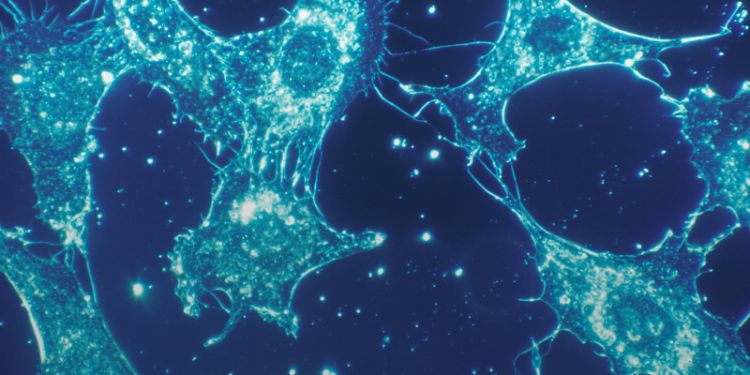
Title: InstaNovo: A Groundbreaking Advance in Protein Sequencing
A novel artificial intelligence platform named InstaNovo is set to transform protein sequencing, mirroring the way AlphaFold has transformed the prediction of protein structures. Created by scientists at the Technical University of Denmark, InstaNovo utilizes state-of-the-art machine learning techniques to redefine the frontiers of proteomics, promising extensive new revelations within intricate biological systems.
The Difficulty of Protein Sequencing
Although DNA sequencing has evolved into a common and well-accepted method over the last twenty years, accurately ascertaining the amino acid sequences of proteins remains one of the most daunting challenges in contemporary biology. Proteins, the essential molecular engines of life, function with remarkable intricacy, and their sequences carry vital functional data that is often hidden in traditional analytical processes.
“Establishing the complete protein sequence is a significant obstacle in biological research,” asserts Dr. Timothy Jenkins, the principal author of the study. “InstaNovo was engineered to extract protein sequences directly from mass spectrometry data, paving the way to biological realms that have previously remained unexplored.”
What Is De Novo Peptide Sequencing?
Central to InstaNovo’s innovation is its implementation of de novo peptide sequencing — a technique for determining the sequence of amino acids in peptides through tandem mass spectrometry without depending on established protein databases. This is essential for investigating samples lacking reference genomes or protein sequences, such as in microbiome studies or investigating novel eukaryotic species.
In mass spectrometry (MS), especially tandem MS (MS/MS), peptides are broken down into ionized fragments. The mass-to-charge ratio of each fragment gives insights into the original molecule’s sequence. Traditionally, algorithms attempted to piece these fragments back together, similar to reconstructing a shredded document. However, this method was frequently fraught with errors and hampered by data gaps, computational demands, and limited scalability.
The Innovation Behind InstaNovo
InstaNovo addresses these challenges by utilizing a transformer-based AI model — the same neural network framework that underlies modern natural language processing systems like ChatGPT and Google’s BERT. Transformers are crafted to detect patterns within data sequences, making them particularly suited for interpreting fragmented mass spectral data as potential peptide chains.
Instead of scouring a database for matches, InstaNovo directly “reads” the fragmentation spectrum and constructs the most likely amino acid sequence through multiple transformer decoder layers. It incorporates a technique known as knapsack beam search, which effectively evaluates and fine-tunes thousands of sequence hypotheses to determine the most plausible outcome — akin to how a human might verify information while tackling a complex issue.
“Our model’s power resides in its capacity to learn and mimic the essential patterns that dictate peptide fragmentation and amino acid sequencing,” elaborates lead researcher Kevin Eloff. “It fundamentally interprets the spectrum into a peptide sequence very much like a person would translate a sentence from one language into another.”
Applications and Early Success
During initial trials, InstaNovo successfully identified the peptide composition in fluid samples sourced from patient wounds. The tool demonstrated remarkable sensitivity, uncovering the presence of at least three types of bacterial pathogens, which were later confirmed through standard laboratory methods.
“The findings were striking,” remarks team member Dr. Kostas Kalogeropoulos. “It’s not that discovering the pathogens was unexpected, but the simplicity and reliability with which InstaNovo could pinpoint them was astonishing. This could significantly influence how we identify and manage infections, particularly in chronic wounds.”
Apart from wound diagnostics, researchers are investigating InstaNovo’s potential in broader uses, such as comprehensive proteome mapping — the total set of proteins produced within an organism or specific cell type. It may also turn out to be crucial in cancer research by pinpointing mutant proteins or those modified by post-translational changes (PTMs), which can alter function and play key roles in disease mechanisms.
A Turning Point for Proteomics
For outside observers like Dr. Francis Impens from the VIB Research Institute at the University of Ghent, InstaNovo signifies a substantial leap forward in the field. “What’s thrilling is how the system broadens our ability to venture beyond known peptides, delving into uncharted biological domains — which could unveil the next frontier for biological exploration,” Impens remarks.
Nevertheless, he warns that InstaNovo’s existing capabilities, while encouraging, necessitate further enhancement. “It needs to be trained on diverse datasets and various types of mass spectrometry devices. Moreover, effectively addressing PTMs will be vital for its expansive influence.”
A Future of Accessible, AI-Driven Proteomics
Despite these hurdles, the creators of InstaNovo maintain a positive outlook. “We’re not claiming to have completely resolved de novo peptide sequencing,” concedes Eloff, “but we are bridging a crucial divide. The long-term ambition is to democratize access to cutting-edge proteomics instruments fueled by AI.”
Jenkins and Kalogeropoulos hold that ongoing interdisciplinary collaboration — involving biologists, data scientists, and clinical researchers — will contribute to refining InstaNovo while propelling biological investigation into a new epoch.
As InstaNovo